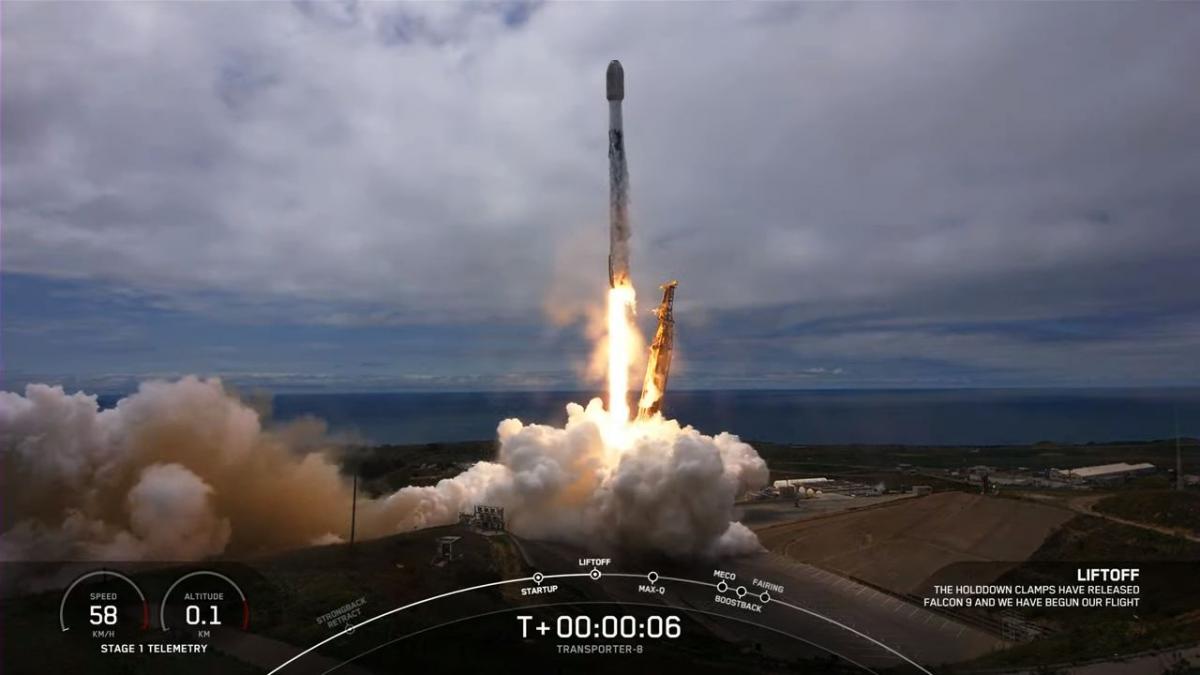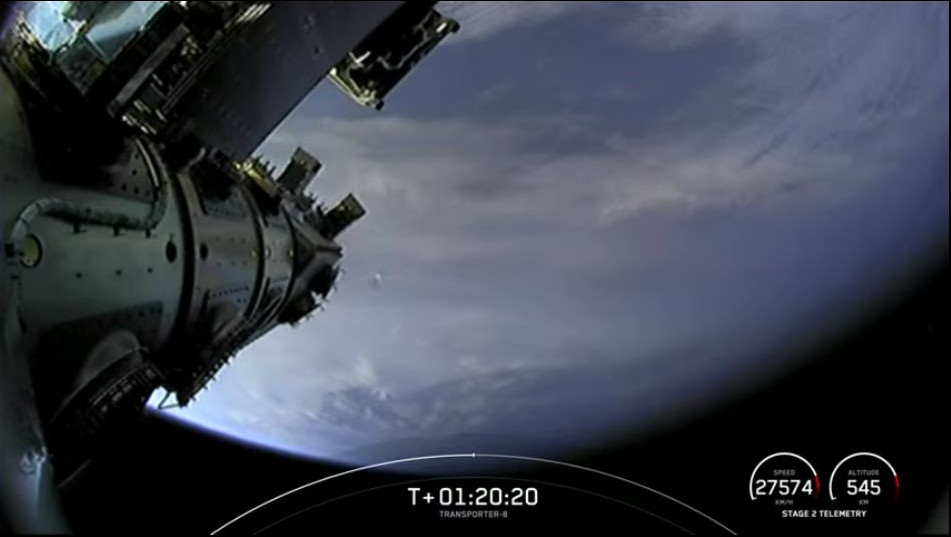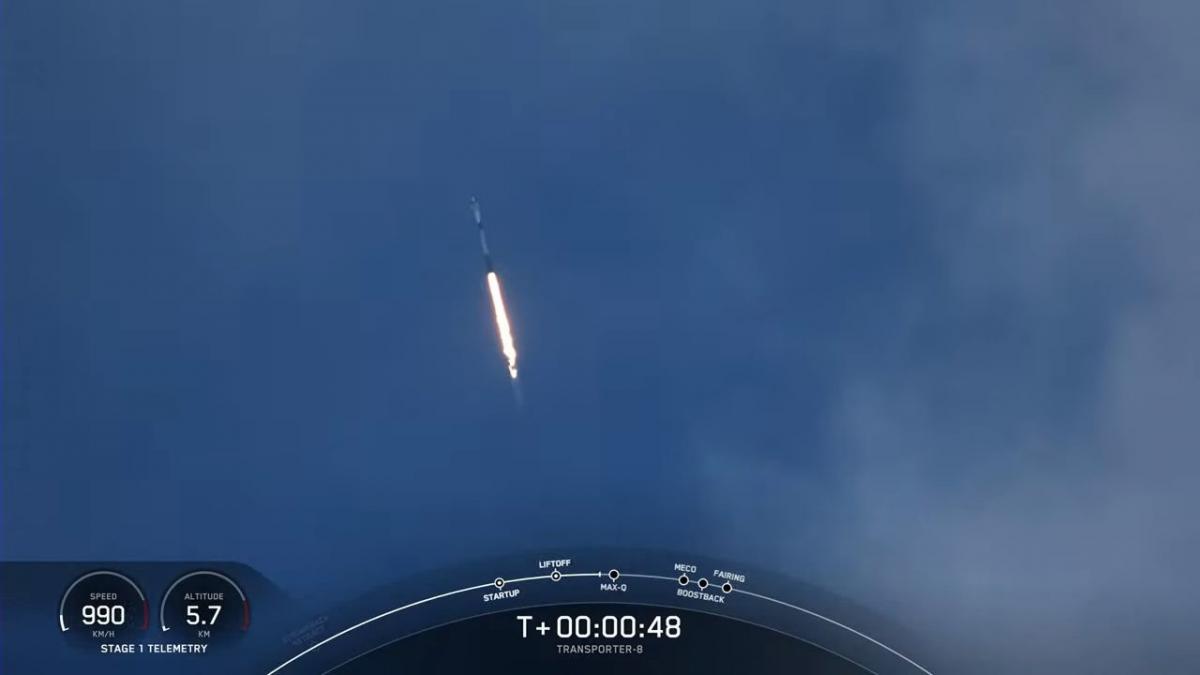2023. June 14.
SpaceX’s Falcon 9 rocket has launched the Transporter 8 mission from Vandenberg Space Force Base in California (USA) with BME’s MRC-100 satellite on board.
A live recording of the launch can be viewed on the SpaceX website and video sharing sites. At 01:20:16 minutes after the rocket’s lift-off, the ION SCV-011 satellite carrier vehicle, developed by the Italian company D-Orbit and carrying our satellite, was successfully detached from the payload. It is due to deploy BME’s fifth small satellite to orbit in 7 days at the earliest. Once the MRC-100 is in orbit, its battery needs some time to charge, as it has depleted since its delivery and installation into the larger satellite in December. As soon as it collects enough energy from the solar panels to power our satellite, its systems will switch on and, with sufficient battery power, it will start transmitting within 7-14 days according to our estimates.

So far, all of BME’s PocketQube category satellite missions have been successfully completed. Budapest University of Technology and Economics has been involved in activities related to space research and technology for decades, in which the development and launch of the MRC-100 represent another important milestone. Led by the Faculty of Electrical Engineering and Informatics, in cooperation with the Faculties of Civil Engineering, Mechanical Engineering, Transportation Engineering and Vehicle Engineering, as well as the Faculty of Natural Sciences, it has also launched a unique Master's programme in aerospace engineering in 2022.
|
The 57-minute launch window for the Transporter-8 low-Earth orbit mission opened at 23:19 local time (21:19 UTC) on Monday, 12 June. The launch took place from launch pad 4E (SLC-4E) at the Vandenberg Space Force Base in California. For sustainability, the first stage of these rockets will return to Earth for further use. This was the two hundredth successful landing in the company's history. Transporter-8 is SpaceX's eighth mission to launch small satellites into orbit. A total of 72 satellites were launched into orbit, including cubesats (such as MaSat-1, the first Hungarian satellite), microsatellites, a re-entry capsule and satellite platforms for smaller space devices. |

Everything is ready at the ground stations (on the roof of BME E building and in Érd) to receive the signals from and control the MRC-100 satellite, named in honour of the centenary of the BME Radio Club. In addition, many of the world’s ham radio operators are waiting for our satellite signals and will transmit them to the developers. News and developments on the MRC-100 are published on the satellite’s dedicated website.

More infromation:
Rector’s Cabinet Communications Directorate
Photo: Space X


